Bio-Hacking Eden: Casuarina, Sargassum, and Agri-Charcoal
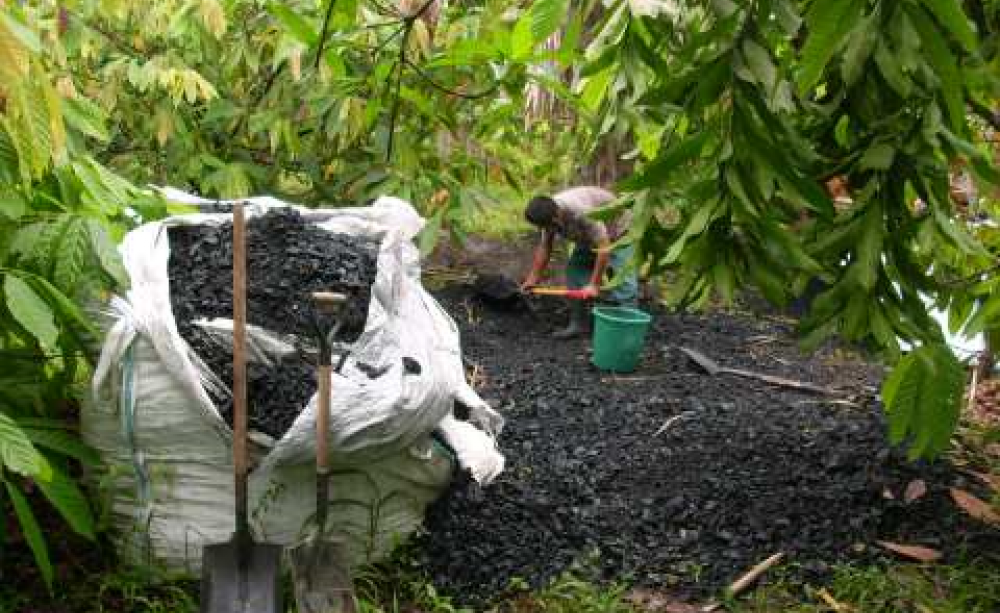
Not all which glitters in paradise is gold. The Caribbean is that paradise on a postcard or travel brochure, but what strikes you about it over time is the sheer corruption on every level. It resembles what you imagine of Eden more in the Fall, than in its beauty. For every powdered beach, there is garbage strewn all over it; for every turquoise stretch of water, someone is pouring in bleach to kill the fish and/or coral.
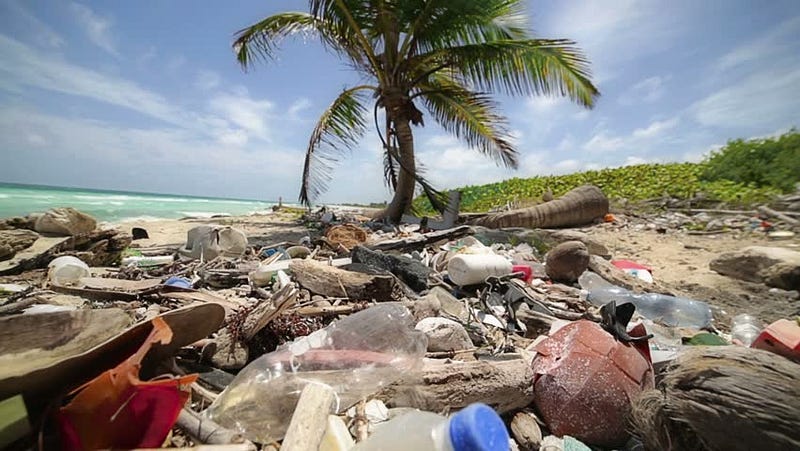
Nature in itself isn’t evil, but when it is left to its own devices — i.e. sobered in neglect — an ecosystem run amok can easily choke its own fertility.
So much has been written about the coral, for instance, it’s well on its way to cliche status. The extraordinary documentary, “Chasing Coral” (https://www.netflix.com/title/80168188) is more akin to a horror movie than an exploration of the natural world. Few people care about coral, and it’s not irrational. Why would you, when out of sight is out of mind?

What you can see on any visit to Eden are the two main blights of the Caribbean ecosystem: Casuarina trees, and Sargassum seaweed. Both of these disasters have been building for quite some time, and although they’re not as immediately destructive as a category five hurricane, they are undoubtedly a slow moving natural coup.
They’re also an agricultural goldmine, which few governments have yet discovered or realised the potential of.
Background reading on Caribbean mineral deposits: https://minerals.usgs.gov/minerals/pubs/country/2005/caribbeanmyb05.pdf
How do you make limestone rocks arable?
The other aspects of the environment are perfect: constant sun, reasonably available fresh water, unused land, and populations dependent on imports who would clearly benefit. The region could be the greenhouse of the world, with exotic species growing in abundance (see: https://en.wikipedia.org/wiki/Citrus_industry_in_the_Caribbean) . Modern economies — particularly those afflicted six months of the year by natural disasters — need to be able to feed themselves.
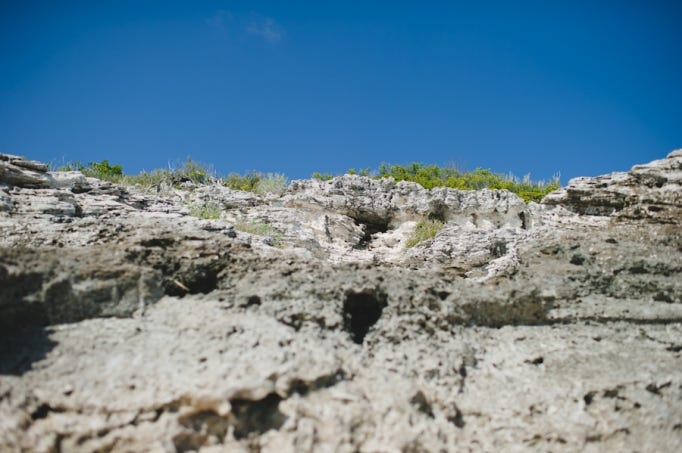
Let’s put aside for the moment the enormous corruption associated with politicians suffocating industries for their own benefit, or even the insular ethnic nationalism behind their constant “land reform” efforts to expel foreigners attempting to help (e.g. BAMSI).
The fundamental problem with places like the Leeward and Lucayan islands — from a scientific standpoint alone, not just how stupid and ignorant the politicians are — is they don’t have any soil. The landforms are almost entirely limestone, which is hostile to most plant life: it is fracturous, soluble, and has an extremely alkaline pH sometimes over 8.5 (7 being neutral).
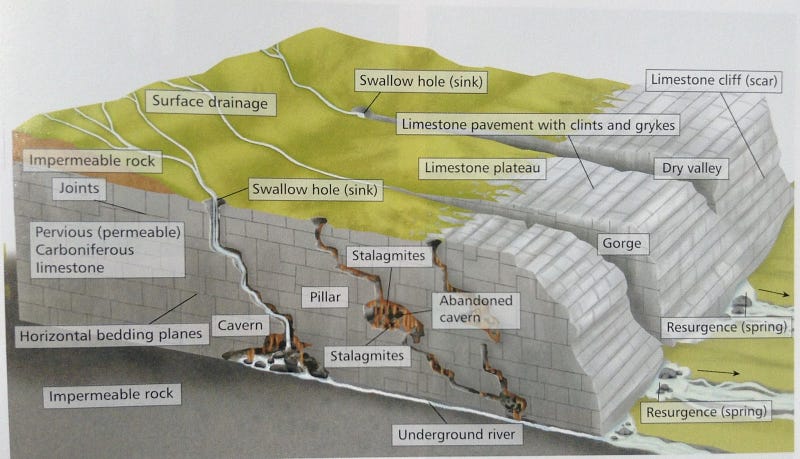
Caribbean & Latin American soils: https://esdac.jrc.ec.europa.eu/public_path/shared_folder/Awareness/Calendar2012.pdf
There are many industries which have taken root in the islands to exploit the ground’s fruits:
- Salt mining (https://www.smithsonianmag.com/history/white-gold-how-salt-made-and-unmade-the-turks-and-caicos-islands-161576195/)
- Sand mining (http://coastalcare.org/2014/05/aragonite-worth-billions-is-being-mined-in-the-bahamas/), and
- Agricultural lime (“AgLime”, e.g: http://www.graymont.com/en/products/chemical-limestone/ag-lime).
More: http://www.caribank.org/uploads/publications-reports/staff-papers/agripaper8-1.pdf and http://www.fomin.org/en-us/Home/Knowledge/Publications/idPublication/110571
There are also several ideas which have been promoted to physically tear up the rocky land into forms of protosoil, through “scarification”, or hellish devices like the “Reefinator”:

In Montserrat, the volcanic eruptions are being studied for programs aiming to transform “ash into cash”: https://www.theguardian.com/world/2016/jan/28/montserrat-volcano-british-territory-geothermal-energy-tourism-sand-mining
Soil is complex. And it’s boring. But it’s essential, and you don’t value it until it’s not there. There are a multitude of factors which make it complicated, including flooding, ground memory, pollution/interference, pH balance, and more.
You’d be forgiven for thinking the situation is hopeless. That is, until you realise one group of people, Israelis, seem to excel at making the desert bloom:
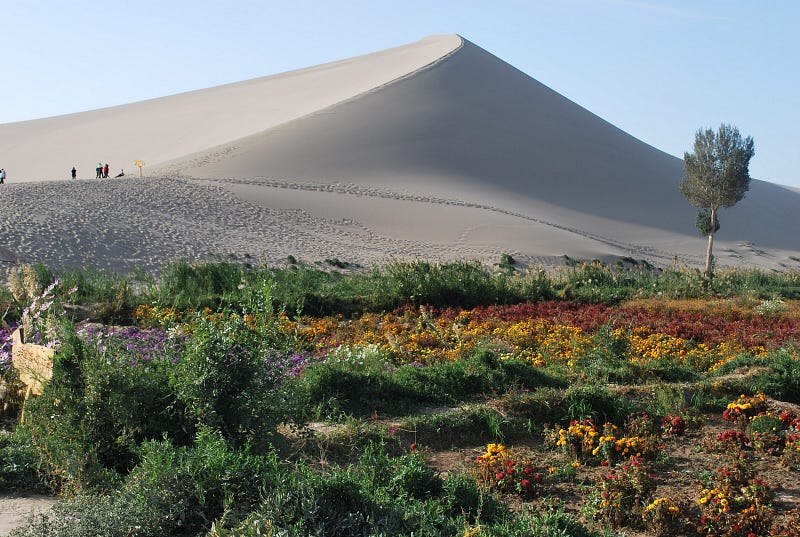
- https://www.israel21c.org/teaching-the-world-how-to-make-the-desert-bloom/
- https://permaculturenews.org/2009/12/11/greening-the-desert-ii-final/
- http://aytzim.org/GZA-AlonTal-The_Israeli_Agricultural_Adventure.pdf
- https://www.wsj.com/articles/how-to-make-a-desert-bloom-1444169349
- https://www.ted.com/talks/magnus_larsson_turning_dunes_into_architecture
If the Israelis and Chinese can transform a desert into fertile land, it’s not a huge step to reboot Paradise.
Casuarina: the Ugliest, Nastiest & Most Destructive Tree You Don’t Know About
Australian Pine (“She-oak”) is so aggressive, it can travel across oceans. Which is what has happened to the northern Lucayan archipelago (the Bahamas), from the original infestation in Florida. Any tourist will recognise these trees, but not realise how bad this highly-invasive “weed of the forest” is for the natural ecosystem.
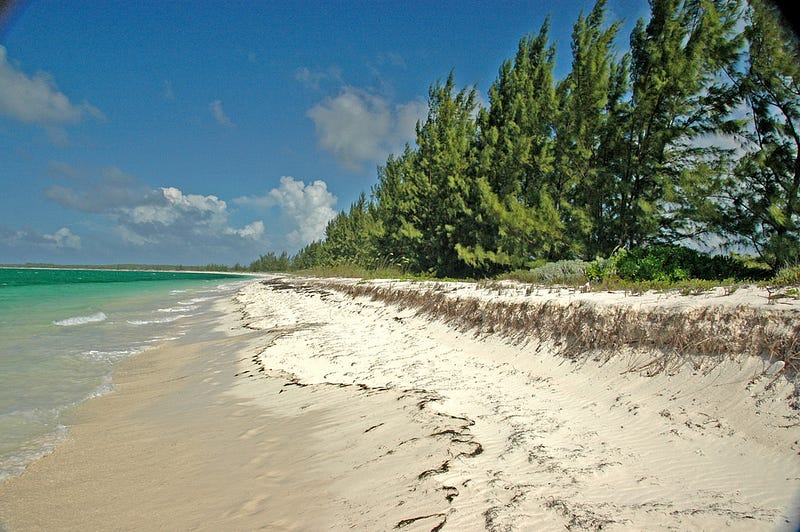
The two evergreen species of Casuarina found in Florida and the Northern Bahamas are Casuarina equisetifolia and Casuarina glauca, and they generally grow 5–15ft per year. After 4 years of neglect, you can have a 60ft oak weed.
Casuarina equisetifolia is also known as she-oak, sheoak, ironwood, beefwood, Common Ironwood, Beefwood, Bull-oak, Whistling-pine. It has 2 subspecies: subsp. equisetifolia (115ft), and subsp. incana (39ft).

Casuarina glauca is also known as swamp she-oak, swamp oak, grey oak, or river oak. It is found in areas of high salinity (e.g. beaches, or inland areas flooded by seawater after hurricanes).

Casuarinas:
- Are the first to fall in storms and hurricanes;
- Suck every piece of nitrogen from the nearby ground;
- Are sources of enormous pollen clouds;
- Form dense monotypic, light-blocking canopies under which no other plants can grow;
- Form thickets suffocating neighbouring species;
- Exhaust soil moisture and reduce the local water table;
- Displace deep-rooted vegetation and damage piping;
- Trap turtle hatchlings in their roots after they hatch, preventing nesting;
- Produce carcinogenic chemicals as a defence system (sapling, roots etc);
- Carpet the ground with acidic/toxic needles;
- Produce phenols, terpenes, and other noxious chemicals in most of their structure which render the nearby ground sterile;
- Ruin the most beautiful natural views the country is famous for.
A few of these bastards are manageable. When they take over most of the island, they render it virtually sterile, and essentially destroy all other life. A bit like the politicians, ironically. The Bahamas National Trust (BNT), for all of its immense failings, has held the policy of eradication for decades: https://bnt.bs/wp-content/uploads/2016/03/casuarina.pdf

You can’t really do much with it, either:
- Firewood: Casuarina is so dense, a bullet goes about an inch in. But it’s the best firewood in the world. You can get charcoal anywhere, at a much cheaper price.
- Mulch: it’s so dense, it takes 10x the blades to chop it up, and it’ll destroy your expensive mulching machine.
- Tannin: there’s not enough of it, and it’s not good enough for commercial applications. You can get it anywhere, at a much cheaper price.
- Paper: they’ve tried it in India. You can get charcoal anywhere, at a much cheaper price.
- Fencing: it’s too brittle for furniture, but in Puerto Rico they’re using it for building structures.
- Dye Removal: the bark and seeds can adsorb textile dyes, particularly reactive orange,16 Rhodamine B, methylene blue, malachite green and methyl violet 2b.
- Home Remedies: there’s no evidence they work at all.
So we have our problem framed: it needs to be eradicated, and if we can find some way to turn it into feedstock, we have a new agricultural industry. And it needs to be paid for.
Sargassum: the Ugliest, Smelliest & Least Welcome Visitor You Can’t Miss
If you’ve been to Barbados (which derives 70% of its GDP of $5B from British tourism), you’ll know all about the enormous brown piles (“blooms”) of stinky crap piling up on the beaches. It’s seemingly uncontrollable. Since 2011, all over the southern Caribbean (from the north coast of South America), the islands have been flooded with this diarrhea-like mess. Research has tracked it back not from the Sargasso Sea (as expected), but southwards from the Atlantic ocean east of Brazil: https://aquila.usm.edu/gcr/vol27/iss1/8/

72hrs after it washes up, it starts to rot. And when it does, it releases gallons of hydrogen sulphide (aka the “rotten egg” smell). Warming oceans and agricultural run-off haven’t helped.
- BBC: https://www.bbc.com/news/world-latin-america-45044513
- Science: http://www.sciencemag.org/news/2018/06/mysterious-masses-seaweed-assault-caribbean-islands
- Barbados HTA: https://drive.google.com/file/d/0B-Dghqqwuy_bZHM3Zm5WcUdzbms/view
Sargassum itself is not actually seaweed; it is a genus of brown algae. The two free-floating (holopelagic) species with the characteristic “berry nodules” (gas bladders) are Sargassum natans and Sargassum fluitans. In and of itself, it is an essential part of the marine ecosystem. The “berries” are full of oxygen, causing its flotation.
Sargassum natans is also known as Common Gulfweed, or Spiny Golfweed, is bushy with tipped pods, long/narrow leaves, and reproduces asexually by fragmentation. It does not have a single main stem; instead it grows in many directions forming clumps that can reach 60 cm (23.5 inches) long.

Sargassum fluitans is also known as Broad-Toothed Gulfweed, has round pods, and short/broad leaves reaching up to 8 mm (0.3 inches) wide and 2–6 cm (0.8–2.4 inches) long. The gas bladders of fluitans are held on relatively long stalks along the centre of the plant. It resembles the more common natans fairly closely.
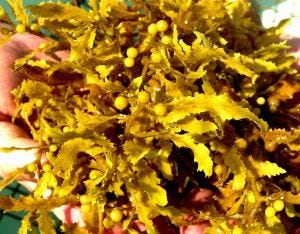
Sargassum:
- Arrives sporadically for several months at a time, floating like an oil spill on top of the water;
- Entangles fishing lines, fishing equipment, and marine species;
- Traps turtle hatchlings in the complex webbing;
- Reduces light, oxygen, and pH of shallow-medium depth waters;
- Ruins tourism for economies which depend on it;
- Builds up on beaches in massive quantities, decomposing with a smell of rotten eggs.
To their credit, Barbados, St Lucia, and the BVI have started to re-frame the problem into an opportunity:
- https://www.stlucianewsonline.com/sargassum-seaweed-can-be-a-goldmine-says-barbados-official/
- https://www.algasorganics.com/
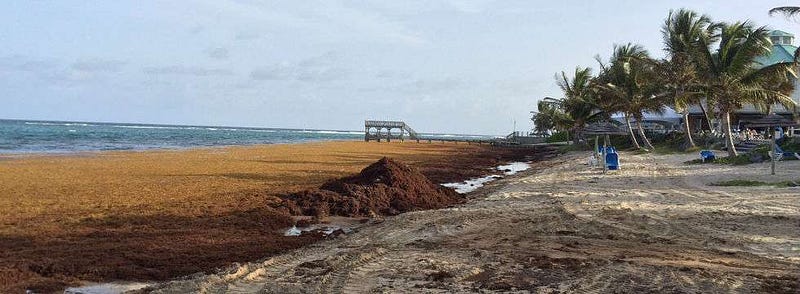
Sargassum isn’t as horrendously destructive as Casuarina, but its effects are highly pronounced economically. So much so, the Barbados government declared the annual “invasion” a national emergency to be responded to by the Navy. If 70%+ of your economy is driven by tourism, you are looking at a recession coming over the waves.
It’s also a) difficult to predict the supply, b) difficult to view on satellite imagery (https://www.noonsite.com/General/Environment/tracking-sargassum-seaweed-invasions-via-satellite), and c) rots quickly.
Collection is difficult, although several attempts have been made:
- http://theoceancleaner.org/sargaboat-sargassum-harvester/
- http://www.todaysxm.com/small-company-builds-system-to-collect-sargassum-seaweed/
Seaweed also doesn’t have the same diversity of use trees do:
- Fertiliser: foliar sprays can increase growth and yield, but poison the soil with their high salinity. You can get fertiliser anywhere, at a much cheaper price. And the islands have no soil.
- Landfill: erosion can be resisted by using it to build up sand dunes and keep the grain cohesive. But it smells. You can get alternatives anywhere, at a much cheaper price.
- Food: it tastes bitter, but some people like it — particularly in Japan, which is the world’s largest importer.
- Animal feed: it’s high in arsenic, so you could end up killing all your animals, or polluting the food chain.
- Home remedies: insect repellents, skin problems, and none of which are supported by scientific evidence.
Again, we have our problem framed: it needs to be blocked and collected, and if we can find some way to turn it into an exportable product, we have a new agricultural industry. And it needs to be paid for.
Natural Waste: A Cash ATM Washing Up On The Doorstep
As the old Yorkshire saying goes: where there’s muck, there’s money. Nature abhors a vacuum, and never wastes a single thing. If we re-think the problem, we can apply new answers to old, difficult problems.The natural dumping of these feedstocks on the doorstep is a proverbial blessing in disguise: a natural resource is being delivered free-of-charge, ready for harvesting, and sale.
The Caribbean can arguably be defined by its inexplicable inability to solve its own problems. A complex problem being inflicted on a largely-incapable electorate is not a historical recipe for prosperity.

Reductively-speaking, all we need to do is re-purpose these nuisances as sources, and we can not only relieve the environmental pressure, but create an economic boon and entirely new industry in areas which desperately needs it. If we look at it again not as a curse to endure, but a resource not needing to be mined, there is enormous potential for economic development.
Biofuel is relentlessly touted as the panacea for rising electricity costs and waste management. It could work if the fossil fuel companies didn’t give the politicians 5% of every barrel of oil the countries’ need to import, and solar wasn’t far more decentralised.
It turns out both these scourges each have an interesting quality to them which is yet to be fully explored.
Casuarinas are unusual because of how they concentrate nitrogen, and Sargassum is unusual because of its concentrated source of algin.
BioCharcoal: A 2000 Year-Old Agricultural Miracle
Charcoal isn’t just for BBQs; its use as a soil additive has been known for thousands of years. Nature magazine published a fascinating article over 10 years ago by Emma Marris titled “Black is the New Green”(https://biochar.co.nz/images/BIOCHAR-FILES/Black_Is_The_New_Green__Nature_10.Aug.06.pdf).
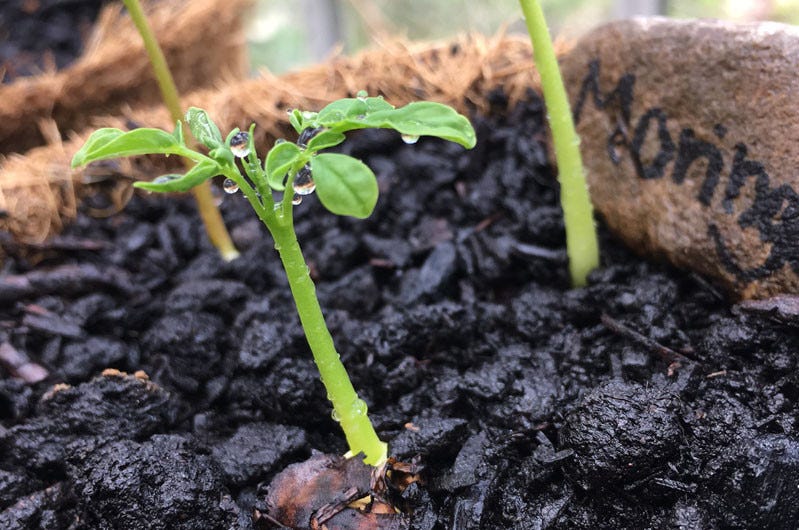
It detailed researchers’ curiosity into Terra Preta de Indio, or the insanely fertile black soil of the Amazon basin:
“Since then trial after trial with crop after crop has shown how remarkably fertile the terra preta is. Bruno Glaser, of the University of Bayreuth, Germany, a sometime collaborator of Sombroek’s, estimates that productivity of crops in terra preta is twice that of crops grown in nearby soils. But it is easier to measure the effect than explain it through detailed analysis. Everyone agrees that the explanation lies in large part with the char (or biochar) that gives the soil its darkness. This char is made when organic matter smoulders in an oxygen-poor environment, rather than burns. The particles of char produced this way are somehow able to gather up nutrients and water that might otherwise be washed down below the reach of roots. They become homes for populations of microorganisms that turn the soil into that spongy, fragrant, dark material that gardeners everywhere love to plunge their hands into. Leaving aside the subtleties of how char particles improve fertility, the sheer amount of carbon they can stash away is phenomenal.”
More on black soil: https://en.wikipedia.org/wiki/Terra_preta
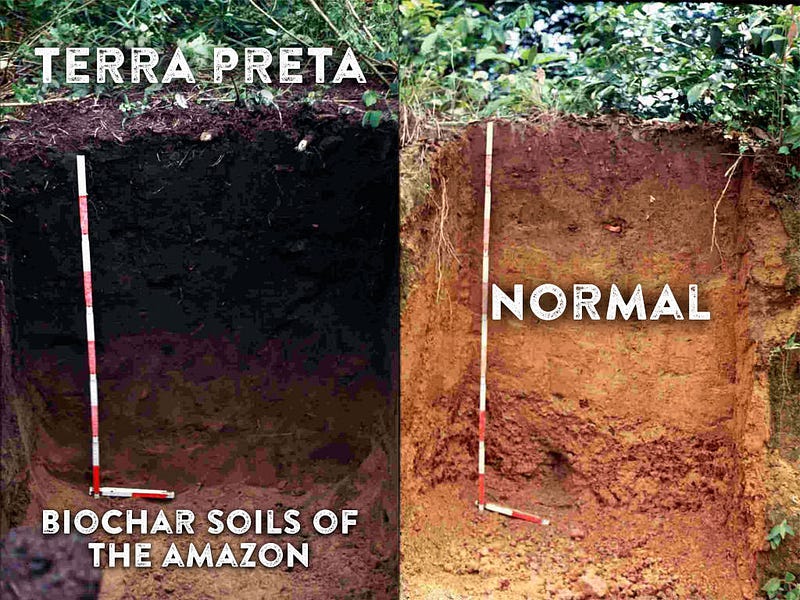
It makes a lot of sense.
- Charcoal itself is carbon (sequestration);
- It holds water;
- It filters out bad materials (hence gas masks), and
- It holds in good nutrients (fertilisers).
You burn wood without flames which would destroy the carbon (pyrolysis), and you get charcoal.
Bio-Charcoal (“Biochar”, or agricultural charcoal) is not a fertiliser in itself; it is a soil additive which increases the quality and fertility of the growing environment. It doesn’t take a nuclear physicist to work it out: put back in what you take out; or if it’s not there, put it in.
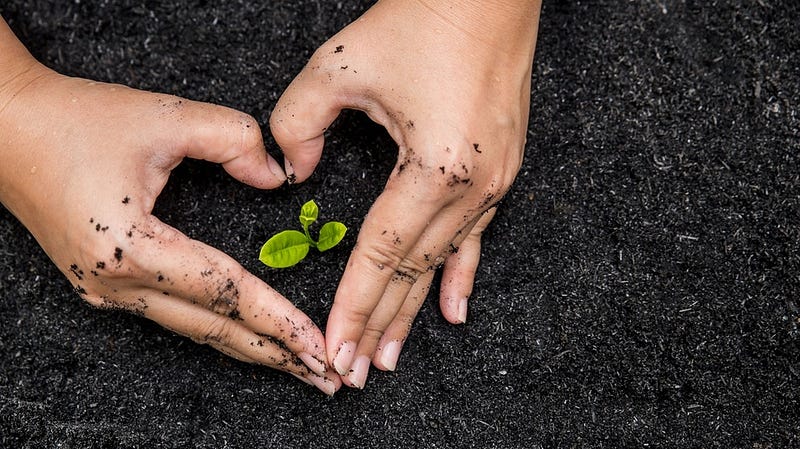
China is building about 50 biochar plants and has tested biochar fertilizer in more than 300 field sites “with impressive results.” Last year, it converted 200,000 tons of crop residues to biochar and expects to convert 800,000 tons this year.
Anything can be made into Biochar: old wooden shipping plates, seaweed, rotten stumps, whatever you can imagine. The worldwide consortium on it, the International Biochar Initiative (IBI: https://www.biochar-international.org/) has volumes of data and is exceptionally helpful. And you can buy it anywhere. So far, no big deal.
Until you consider the idea of pyrolysing Casuarina into charcoal. Not for BBQs, but for citrus farmers.
Why? Because, as you should have figured out — Casuarinas aren’t just the world’s best charcoal; they are unique in how they concentrate nitrogen. What’s the main chemical in fertiliser? Nitrogen.
The Bahamas has an overflow of a feedstock which could — and emphasis on the theoretical — be the source of the world’s most fertile soil additive. A pest could be a blessing. You can make and obtain Biocharcoal anywhere in the world, particularly from waste products, but very few, if any of them, will contain an internal fertiliser component by default. You can buy Biochar elsewhere, but nature fixed the nitrogen from the soil right into it as a USP (it may not have phosphorous or potassium, but you’re going to save money).
Add that to the problem of limestone rock, which is virtually devoid of carbon or nitrogen, and also has a serious problem retaining water or cohesive particles, — and the applicability of Terra Preta to Caribbean islands could be profound.
If the islands which suffer the Casuarina scourge pyrolyse the trees, they can put the nutrients those plants removed right back into a new proto-soil. Nature has done their work for them.
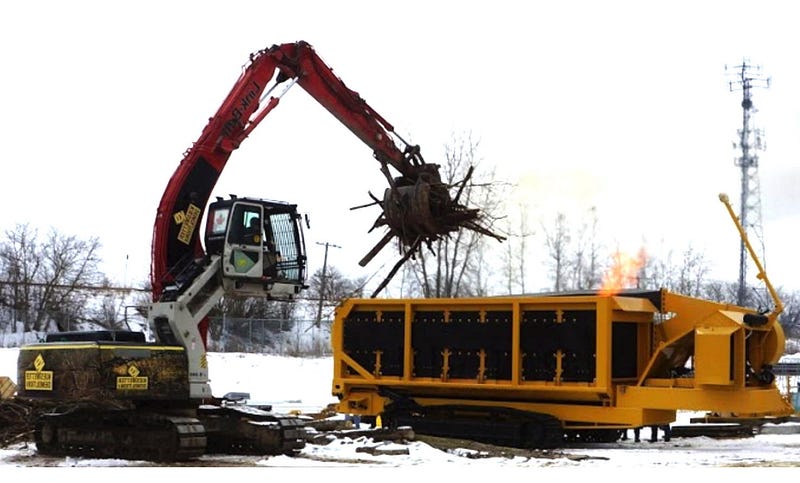
On to the economics.
The average retail price of 1 tonne of Biochar is currently US $2,500 (ish, wholesale: US $800). 7,457 metric tonnes of Biochar were produced in 2015. China has ordered 800,000. The market is expecting 14.5% CAGR, USD $3.14 BN by 2025. 61% of the market demand is from the United States (citrus farmers).
A typical mobile air-burner unit can pyrolyse 20+ tonnes per hour, costs $20/hr in fuel/labour, and can figuratively burn wood material faster than it is cleared. The yield from a regular pyrolysis procedure can be 5–25%, depending on the technique used.
Casuarina plantations average a yield of 75–100 tonnes per hectare after 6 years growth (30–40 tonnes per acre). 100 tonnes of Casuarina biomass can generally produce up to 15 tonnes of BioChar (15%), with a wholesale value of USD $12,000 (15 x 800). 1 acre Casuarina = 40 tonnes biomass = 6 tonnes Biochar = US $4800 (6 x 800).
Putting the numbers together:
- 1 acre of Casuarina can produce 3–5 tonnes of Biochar.
- 1 tonne of Biochar has a wholesale value of $500–800.
- A acre of resulting product is worth $2400–4000.
- 100,000 acres of Casuarina can produce 300,000 tonnes of Biochar with a wholesale value of $240M.
- China — alone — is aiming to order and/or produce 800,000 tonnes.
These figures only take into account the concept of export, not taking the resulting Biocharcoal, and re-entering it into a new proto-soil atop the limestone landform for a country’s own agricultural purposes.
Alginate: A Product With Only Two Sources
When you’ve eaten an ice cream, have you ever wondered how the cream got its thickness? Or, if you’ve ever been to the dentist, have you ever been curious as to how the imprint of your new tooth was made on that material?
The answer is Algin, also known as Alginate, or Alginic Acid. As the name implies, if it isn’t grown from bacteria, it comes from algae. One type of algae to be exact: brown seaweed.

“ Alginic Acid is a polysaccharide distributed widely in the cell walls of brown algae, where through binding with water it forms a viscous gum.[snip] Its colour ranges from white to yellowish-brown. It is sold in filamentous, granular or powdered forms. Alginates are refined from brown seaweeds. A wide variety of brown seaweeds of the class Phaeophyceae are harvested throughout the world to be converted into the raw material commonly known as sodium alginate. Sodium alginate has a wide use across a wide variety of industries including food, textile printing and pharmaceutical. Dental impression material utilizes alginate as its means of gelling. Alginate is safe as an ingredient in manufactured foods.”Alginic acid - Wikipedia
Alginic acid, also called algin or alginate, is a polysaccharide distributed widely in the cell walls of brown algae…en.wikipedia.org
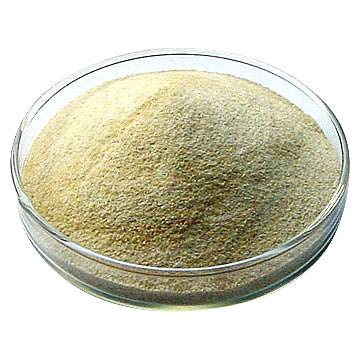

Ok, Phaeophyceae is not Sargassum, which is renowned for its crappy Algin content (see FAO: “The alginate content is usually low compared to the previously listed genera, and the quality of the alginate poor, although there are exceptions. For alginate extraction, they are regarded as the raw material of last resort.”).
Quietly, in a corner of McGill’s Barbados “campus”, 3 researchers (Sophie Baker, Elena Cabot and Kisa Giebink) undertook an interesting field study, regarding the efficiacy of producing Alginate from Sargassum:
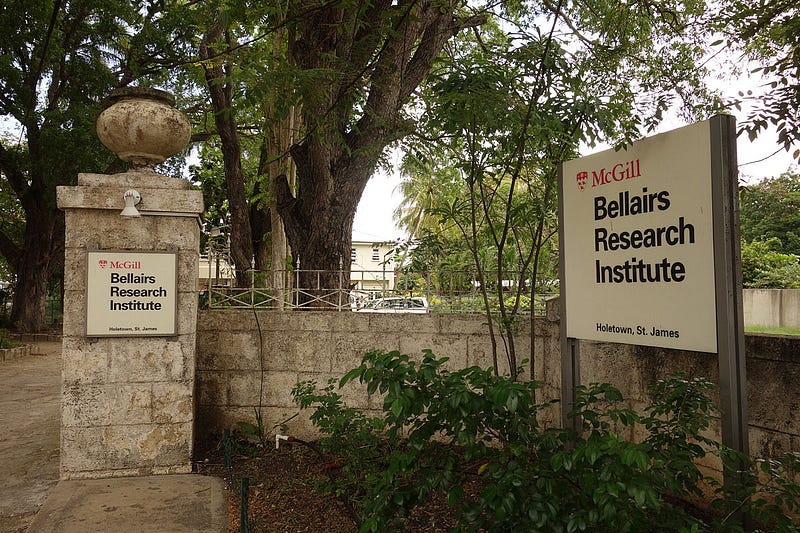
“We were able to extract alginate from Sargassum that has commercial utility and potential as an export product. We hope that these preliminary findings will assist others to purpose the Sargassum that is likely to arrive on the island in increasing volumes.”
https://www.mcgill.ca/bits/files/bits/team_sargassum_illustrated_summary.pdf
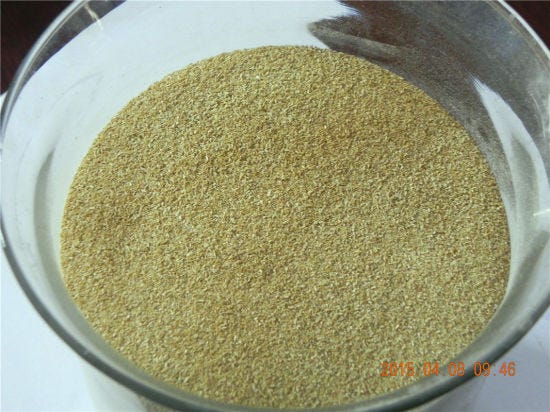
Thousands of tonnes of this is washing up on Barbadian & Trinidadian shores, only to destroy their tourism economy. The global market is due to be worth 25% of Barbados’ GDP, and it controls one of the largest sources of supply.
Producing raw alginate is surprisingly simple — if you chose to go that route instead of simply washing it in the rain, and drying it on the roof, to produce storeable powder (“The difficulties of the processes arise from the physical separations which are required, such as the need to filter slimy residues from viscous solutions or to separate gelatinous precipitates which hold large amounts of liquid within the structure and which resist filtration and centrifugation”):

It’s so simple, a crack dealer could do it.
- http://www.fao.org/docrep/006/y4765e/y4765e08.htm
- https://www.amazon.com/Alginates-Production-Applications-Microbiology-Research/dp/1619425467
- https://www.youtube.com/watch?v=4RadX7mgDOg
Again, putting those numbers together:
The market in alginates is estimated to be worth around $410M (CAGR: 4%), rising to $924M by 2025 (21,515.9 tonnes, CAGR 4.5%). Currently, the US both imports and produces around 12,000 tonnes annually, followed closely by China and Germany.
A tonne of dried Alginate (or associated compound) can be worth $500–1200 if correctly processed freshly. The issue of sporadic arrival is moot if it is powdered and stored. The issue of being unable to anticipate it from satellite is resolved with drones or other measures (https://www.researchgate.net/publication/232973136_Distribution_of_floating_Sargassum_in_the_Gulf_of_Mexico_and_the_Atlantic_Ocean_mapped_using_MERIS).
“High demand for alginate as a thickening and gelling agent in food and beverage and bakery and confectionery is expected to boost the market growth in the forthcoming years. Rising demand for ice creams, beer, and yogurt is likely to drive the demand from food and beverage sector. Increasing use as an emulsifier in salad dressings, margarine, frozen desserts can also spur the alginate market growth during the forecast period. Extensive usage in pharmaceuticals as a thickening agent, emulsion stabilizer, disintegrated, and film-forming agent for tablets can also bode well for market expansion. Rising use of alginate in tablet coatings due to its superior characteristics is likely to bolster the market growth during the forecast period.”
- Up to 50,000 tonnes of Sargassum can wash up on the shores of a Caribbean island every year (12,300 miles across the region);
- The current yield of Alginate from Sargassum — with its poor production process and terrible yield — can be from 5–17%.
- 1 tonne of Alginate has a wholesale value of $1000–$8000 per tonne (depending on its purity);
- Ergo, 6000 tonnes of Sargassum could yield 1000 tonnes (ish) of (variable quality) Alginate, with a market value of $1–8M, or:
- 240,000 tonnes of Sargassum can produce 40,000 tonnes of Alginate, with a potential wholesale market value of $40M — $320M.
As an export, it’s a perfect storm, so to speak: the world market has a shortage, and the region has a surplus. The yield is poor, but the market will invest in the science to perfect that, if required. It won’t be the algae of last resort forever, particularly if multi-factorial laboratory analysis provides evidence the scourge is a source of additional minerals.
e-Agriculture: A New Frontier in an Old Problem
We spend so much time promoting advancement in social urban life we forget the basics on which we depend; it’s no good having ultra-fast cell data, if you can’t eat. The problem isn’t pronounced in developed countries, by virtue of their name: they are already developed.
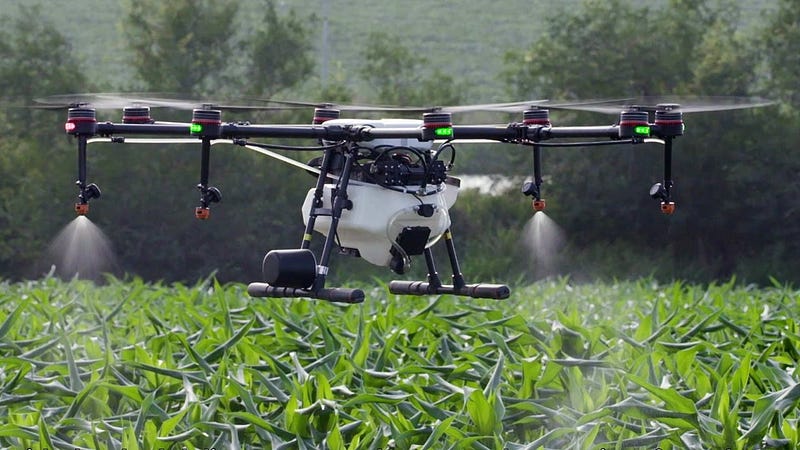
You’d be hard-pressed to find a developer anywhere who isn’t sick and tired of hearing about the “next Skype”, the “Uber for [insert pointless thing here]”, or the apparent revolution around the corner. There are simple human essentials which transcend being useful, in that they are critical for survival.
The spear, the net, the bow & arrow, and cave drawings were forms of technology — which is a manifestation of our tool-making abilities.
- https://en.wikipedia.org/wiki/E-agriculture
- https://en.wikipedia.org/wiki/Information_and_communications_technology_in_agriculture
- https://www.agrilinks.org/post/looking-back-looking-forward-e-agriculture-10-year-review-report
A visit to Eden helps you remember and get things back into perspective. Technology isn’t about your damned iPhone app. It’s about a hell of a lot more.
